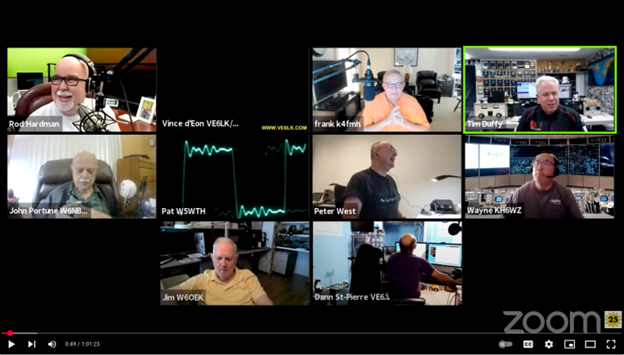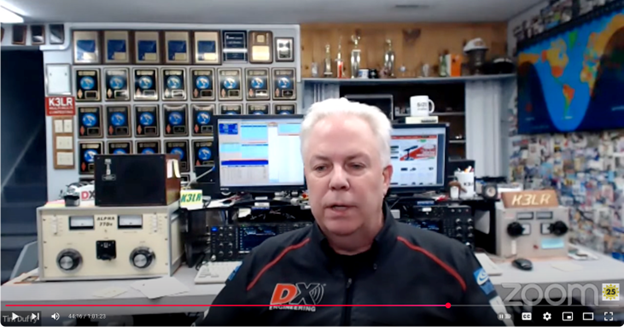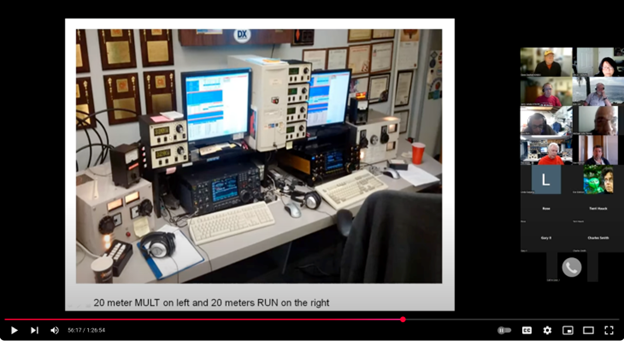The Queen of Soul may have been way ahead of her time.
“Who’s Zoomin’ Who” is the title of a 1985 Aretha Franklin tune. In the context of the song, zooming means trying to catch the attention of someone else or checking someone out. Today, zooming has been adopted to describe the use of video conferencing platforms, where people are joining meetings or calls via video.
Zoom meetings gained popularity during the COVID-19 pandemic. For safety and health reasons, organizations and businesses were compelled to devise new methods for running their operations. Online meetings became the norm for connecting people both locally and globally, conducting business, and holding classes without the need for traditional in-person meetings.
Are your radio club’s Zoom meetings attracting attention? Are hams checking them out? They should.
Video Conferencing Hardware You’ll Need
Before we get deeper into the subject, let’s look at what’s needed to make video conferencing happen. The basics include an Internet connection and a computer, tablet, or smartphone with the appropriate software or app. Generally, all of the above come equipped with video cameras and built-in audio systems.
Zoom is just one of the online platforms available. Some other examples include Google Meet, RingCentral, Microsoft Teams, and Zoho Meetings. (When I mention Zoom in this article, I’m using it as a reference to all video conferencing programs.)
Our local club uses Zoom in a hybrid mode, giving members the option to attend meetings either virtually or in person. This requires a bit more equipment to hear and see everyone, allowing for proper two-way communication. Our setup uses a laptop computer with an external USB camera, a portable PA system with a mixer, two wireless microphones, a USB microphone, and either a video projector or a large flat-screen television.
The great thing about hybrid mode is that you can invite guest speakers from just about anywhere, as well as members who are out of town or others who are interested in remotely visiting your club. If you’re under the weather or tired from a long day at work, you can join in from home and not miss a thing.
***
Seven Ways to Take Advantage of Online Virtual Meetings
***
While ham radio operates on radio frequencies independently of the Internet and cellular networks, it continues to evolve and integrate with modern technologies. One increasingly relevant connection is between ham radio and video conferencing platforms such as Zoom. There are many ways in which ham radio can take advantage of video conferencing to enhance education, collaboration, and emergency coordination.
1. Education & Training
One of the most common uses of Zoom in the ham radio community is for education and preparation for licensing. Amateur radio operators must pass an exam to receive their license, and many ham radio clubs have shifted their in-person training sessions to Zoom. This enables instructors to reach a broader audience regardless of their geographical location. Zoom facilitates interactive training, including screen sharing for showing schematics, signal flow diagrams, or FCC regulations, as well as breakout rooms for group study sessions.
Elmers—experienced ham radio mentors—can use Zoom to coach newcomers about operating equipment, troubleshooting issues, or understanding propagation conditions. This real-time visual and verbal guidance bridges the learning gap that sometimes challenges new ham radio operators.
You can use Zoom to branch out to STEM classrooms and introduce young people to radio through interactive online sessions. Do Zoom sessions with radio demos, space comms (ISS contacts), and hands-on projects.
2. Club Meetings & Remote Collaboration
Zoom has become an invaluable tool for ham radio clubs. Monthly member meetings, which once relied on community centers or rented halls, are now frequently held online. Also, officer and committee meetings can be held via video conferencing. This not only reduces logistical costs but also increases participation. Members who are elderly, live far away, or have mobility issues can now easily attend.
Special Interest Groups (SIG) for amateur radio focus on specific aspects of the hobby, such as digital modes, contesting, or public service. They provide a platform for like-minded enthusiasts to share knowledge, participate in activities, and connect with others who share similar interests. Hybrid meetings allow for more participation and expand your SIG’s reach among the ham community.
Zoom enables remote collaboration for projects like building antennas, setting up repeaters, or organizing Field Day operations. Screen sharing lets club members jointly review project plans and technical documentation. This helps to maintain community engagement even when members cannot meet face-to-face.


3. Event Coordination & Logging
Ham radio events such as contests, special event stations, or emergency drills require coordination. Zoom can serve as a real-time communication tool for these operations. Participants can use Zoom to monitor event progress, make corrections, and debrief afterward. Operators stationed at different geographical locations can report signal strengths, log contacts, and update others on atmospheric conditions or equipment issues—all while staying connected via Zoom. This keeps the airwaves open for important information and traffic.
Additionally, Zoom can be used during live events to help team leads manage multiple radio operators. During Field Day, for example, Zoom provides a central coordination point where organizers can monitor who is on the air, discuss strategies, or even bring in guest speakers to qualify for the educational activity’s 100-point bonus.
4. Emergency Communications & Disaster Preparedness
Ham radio operators often serve critical roles in emergency communication when traditional infrastructure fails. While radio communication is central to these efforts, Zoom can supplement operations when Internet access is available. Emergency response teams can use Zoom to hold strategy sessions, assess damage reports, and allocate resources.
In hybrid disaster scenarios where some areas have connectivity and others don’t, ham operators can serve as relays by using radio to gather data from the field and then reporting findings over Zoom to centralized emergency response teams. In this way, Zoom enhances the coordination and documentation side of emergency communications, while ham radio continues to facilitate information flow even when digital infrastructure is compromised.
5. Technical Demonstrations & Remote Operation
Modern ham radio often involves sophisticated equipment and software, such as Software-Defined Radios (SDR), satellite tracking systems, and digital communication modes like FT8. Demonstrating how to use this technology is significantly easier through Zoom. Instructors or presenters can share their screens to illustrate the real-time operation of radio software, explain configuration steps, or troubleshoot user issues.
Video conferencing can be incorporated into just about any ham radio activity, including weekly nets. Orange County Radio Amateur (OCRA) club meetings and nets can be joined via Zoom, a capability similar to the ham radio telephone patch. This capability is offered primarily to hams who do not have the required radio equipment to hear the radio or those who may be traveling out of the area.

6. Remote VE Testing
If you live relatively far from a local VE testing session, another option is remote testing. This option was a means of licensing individuals during the pandemic. However, it’s a bit more complicated and time-consuming than a regular in-person exam. Exams require a minimum of three volunteer examiners per session, and only one candidate can be tested by them at a time. The test taker must have two webcams—one for the Zoom call and another to scan the room and then as a second angle to watch the test.
It’s like the paper-based multiple-choice test but done on your computer. The test itself would be displayed on your screen as 35 or 50 questions, each with four possible answers. You can change answers if you change your mind, up to the point when you indicate you’ve finished. Once you complete the exam and the examiners agree that the exam was conducted properly, your answers will be graded automatically and the results reported to you.
Online test sessions are still being held. A list of those offering sessions by video conferencing can be found at the ARRL site.
7. Continuing Education
Want to learn more about ham radio? Zoom in on the RATPAC.
The Radio Amateur Training Planning and Activities Committee (RATPAC) hosts nationwide Amateur Radio Zoom presentations weekly on Wednesdays and Thursdays, covering amateur radio topics and emergency communications. Topics are selected from audience recommendations sent to the planning committee, which then seeks topic experts or discussion panel members. The presentation audience consists of thousands of amateur radio operators worldwide who participate directly in the Zoom sessions or with video links of the presentation and related documentation sent out after each session.
Anthony Luscre, K8ZT, is a local ham and regular presenter of RATPAC programs. You may have also seen his articles from OnAllBands.
Complementary Technologies
While ham radio and Zoom may serve different purposes, combining them unlocks new potential for the amateur radio community. Zoom enriches the educational, organizational, and collaborative aspects of ham radio. Ham radio provides a reliable and independent communication channel, particularly valuable in emergency situations. Together, they form a hybrid communication system that is greater than the sum of its parts.
As Zoom and ham radio continue to evolve, their integration will likely deepen, modernizing the world of amateur radio and making it more accessible, resilient, and effective. And give it a little respect…
***
Important note! Broadcasting amateur radio communications over Zoom may require third-party traffic agreements or be restricted by local regulations. Ensure you comply with rules regarding rebroadcasting and third-party communication.

